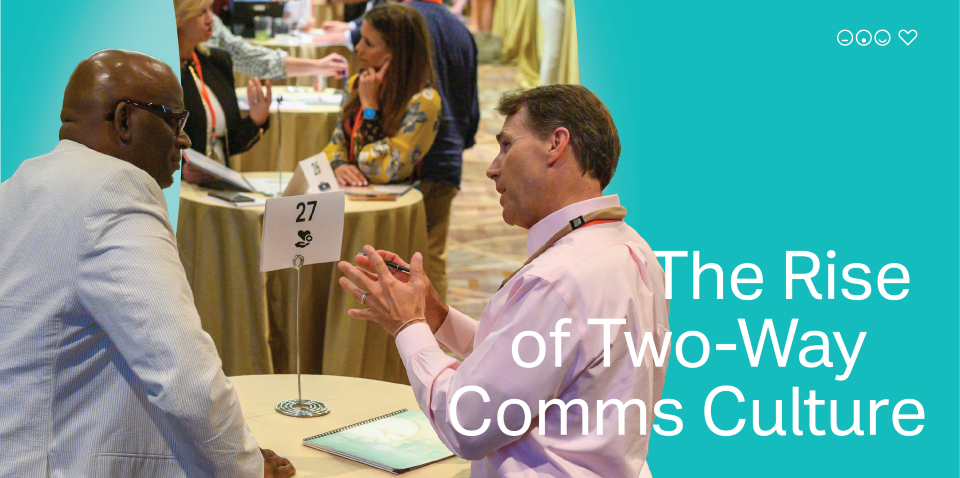Jack Health Blog
August 12th, 2025 By Jamey Hardesty and Remy Patrizio

But before we unpack why, let’s start with the gap between perception and reality:
- 85% of execs think they’re doing a good job communicating. Only 26% of employees agree. – Sparrow Connected, 2024
- 73% of leaders believe their people can find and act on strategic goals. Only 49% of employees say that’s true. – Axios HQ, 2024
- Gallup reports just 31% of U.S. employees are actively engaged. That number has dropped for years. – Gallup, 2024
The message from the front lines?
We’re not as aligned as we think. And people aren’t feeling seen, heard, or safe to speak up.
And this isn’t just about hurt feelings. It’s a business risk with a massive cost.
- $15,000 per employee, per year. That’s what miscommunication costs the average company. Across the U.S.? That’s $2 trillion lost. – Axios HQ, 2023
- Disengaged employees drive 37% higher absenteeism, 18% lower productivity, and 15% lower profitability. That’s 34% of salary gone in value. – Gallup, 2024
- 63% of employees considering quitting cite poor internal communication. – Staffbase, 2025
- Silence is costly. When employees don’t speak up, risk festers, problems go unreported, and innovation dies in the dark.
- And managers are struggling too. In 2024, manager engagement dropped to 27% globally. That translated to $438 billion in lost productivity last year alone. – Gallup, 2025
So, what’s going wrong? It’s not that companies aren’t communicating. It’s how they’re doing it.
Most internal comms still operate like a loudspeaker: top-down, one-way, heavily filtered. The message goes out, but nothing comes back in. And if it does, there’s rarely a clear path for it to shape what happens next.
The result? People feel talked at, not talked with. Engagement drops. Alignment frays. Culture becomes something you talk about, not something you co-create.
That’s why we believe the future of strong internal culture is built on something deceptively simple: Two-way culture. (And no, not a typo. We meant culture.)
What Two-Way Culture Looks Like
At Jack Health, we’re wired for culture. We track what’s breaking through, speak the language, and know the difference between a passing trend and something that sticks. We love nothing more than helping our clients build cultures that people want to be part of. Cultures that spark pride, loyalty, and momentum from the inside out.
And we’ve learned from working with some of the most driven healthcare organizations out there: Culture doesn’t live on posters and in all-team meetings. It lives in practice.
And the operating system that powers it? Communication.
It’s not just what’s said, but how it moves. Or what’s shared, but who gets to shape it. When communication is one-way, culture becomes a monologue. When its two-way, culture becomes a conversation.
That’s why internal comms aren’t just a function.
They’re infrastructure.
So, what do we mean by two-way culture?
It’s a system where employees aren’t just informed, they’re involved. Where feedback isn’t just collected, its acted on. Where the people closest to the work have a voice in how the work gets done.
Here’s what two-way communication makes possible:
- Accelerates alignment because people help shape priorities, not just hear them
- Surfaces friction earlier so risk is managed before it metastasizes
- Drives trust and loyalty by closing the loop on feedback
- Fuels smarter decisions through proximity to real experience
- Unlocks belonging not through ping pong tables, but through voice and visibility
And this isn’t just a list of nice-to-haves, it’s becoming the new scorecard. In 2025, 93% of organizations hold internal comms pros accountable for employee engagement. – Gallagher, 2025
When culture is at risk, communication is the first, and most powerful, lever you can pull.
So, where should you begin as you plan for 2025–2026?
- Build for strategic clarity
- Design for listening, not just talking
- Measure what matters
- Create experiences that stick AND shift behavior
Most importantly: remember that creating great comms isn’t just providing your people with what they already know; it’s delivering the adrenaline shot of something they can do differently.
Coming Soon: Stay tuned for the next edition in this internal comms series where we’ll be myth-busting and talking building for consistency.
Can’t wait? Contact us, and we can set up some time to chat with Jamey and Remy!